I love walking along Idaho’s Snake River this time of year, with the near constant sound of whistling wings and the quacks and honks of migrating waterfowl. On a recent hike, I picked up another sound, almost like a goose but with more hooting. My Sibley guide says it sounds like “baying hounds” and that is pretty close to what I heard.
I looked up and saw a flock of tundra swans overhead. Their large, white bodies against an autumn blue sky made a striking sight.
Become a Member
Making a lasting impact for nature when you join The Nature Conservancy!
It’s not difficult to make the case for swans. They rank among the most beautiful birds, inspiring fairy tales, ballets and medieval-style artwork. And the reason you’re here: a Christmas carol.
The Twelve Days of Christmas is a notably birdy song. Over the past few years, I’ve taken a deep dive into the natural history of the carol, pondering what species the partridge is, why the “calling birds” may be a case of lyric misinterpretation, and even suggesting the “five golden rings” may, in fact, be pheasants.
Now it’s time to turn our attention to one of the more dazzling, and expensive, bird gifts on the list: seven swans a-swimming.
Swans are one of the more easily recognized birds. But did you know there are seven–that’s right, exactly seven–swan species in the world? Found primarily in temperate regions, they’re all big and beautiful. Because they are so charismatic, several of these swan species offer inspiring conservation success stories. And a couple have thrived a bit too successfully.
Here’s your field guide to the seven swans a-swimming in wetlands and rivers around the globe.
Top 10 List
-
Mute Swan
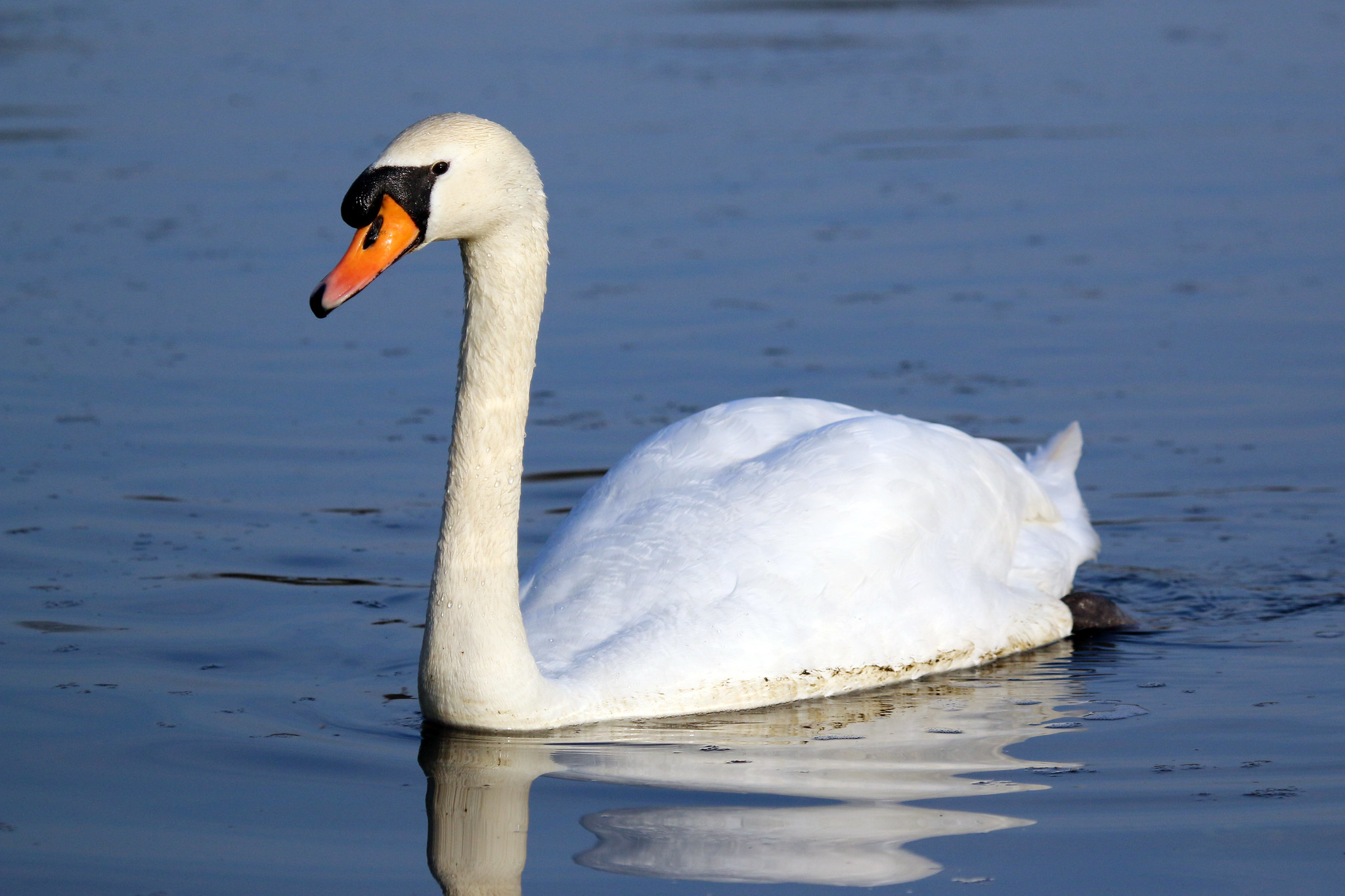
Mute Swan © Charles J. Sharp via flickr under creative commons license This is the familiar swan, the one that appears in The Ugly Duckling and the Christmas carol. Seven mute swans make an extravagant gift, especially in the late 1700s when this song first became popular. In medieval times, swans were traded among royalty, as historian Kate Williams notes in a fascinating essay on swans as gifts. Swans were especially valued as a gourmet meal, and Williams writes, “Any top feast worth its salt had to have a swan as a centrepiece, especially at Christmas feasts. Ideally, you’d roast a few swans in their feathers and put a burning piece of incense in its beak.”
I recognize that probably won’t become your new holiday tradition, and in reality, swans are now often kept more for aesthetic reasons than culinary ones. In the United Kingdom, though, unmarked swans technically remain royal property.
Each spring, rowing skiffs head out on the River Thames, with crews capturing and recording the health of swans, a practice called swan upping.
Because of their beauty, mute swans are kept around the world. Some live semi-feral lives, escaping and living in nearby parks. I sometimes see a lone mute swan swimming along the river path near my home, and wonder how it got there. In places, such swans form a feral population and become quite harmful to ecosystems. For example, five swans escaped from a Maryland estate and proliferated in the Chesapeake Bay. For all their beauty, mute swans are highly aggressive and rip up aquatic plants from the roots. They’ve also been very destructive of wetlands in the Great Lakes and California’s coast, among other places. Maybe roasted swan for the holidays isn’t such a bad idea, after all.
-
Trumpeter Swan
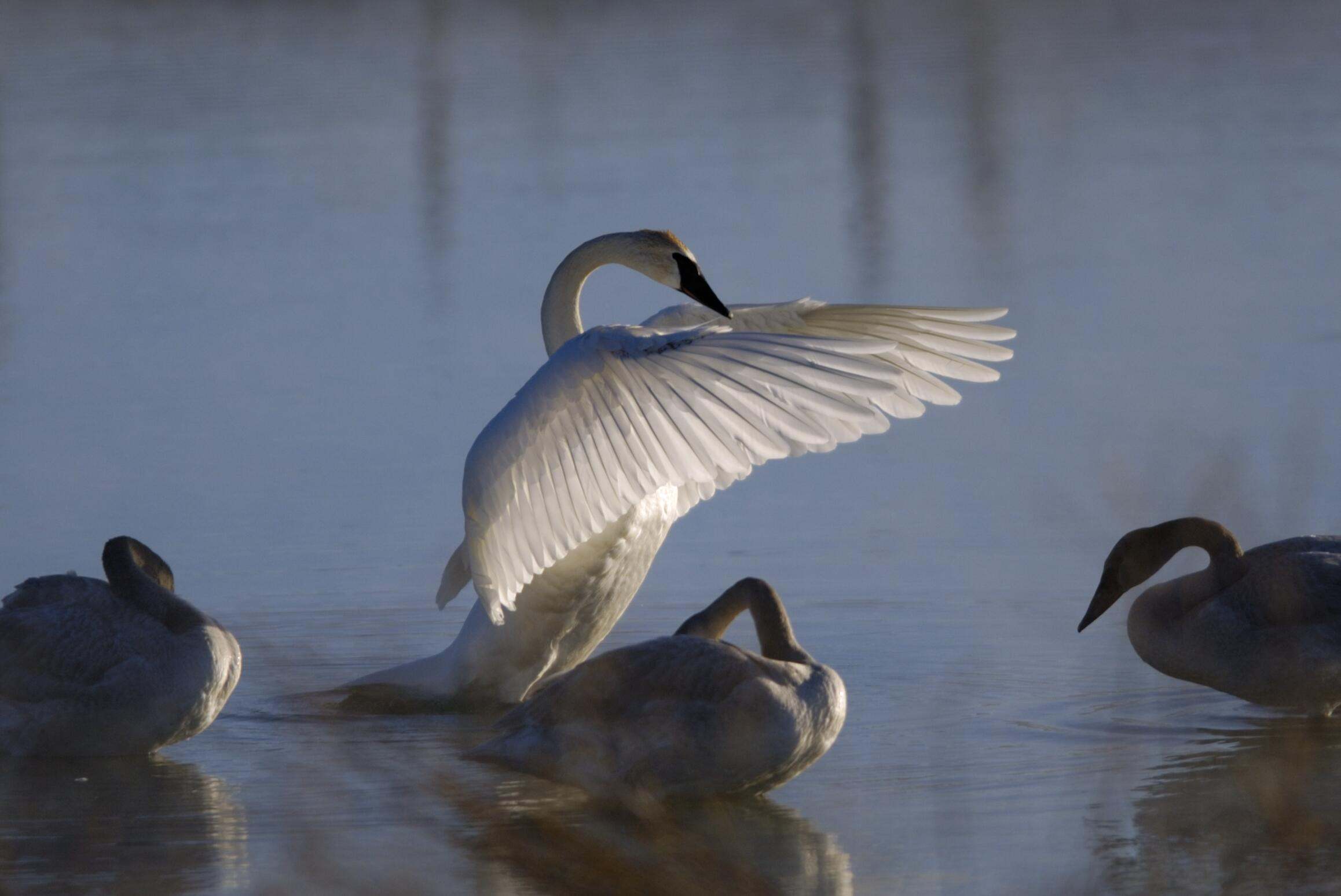
Trumpeter swan spreading its wings at Kelly Warm Springs in Wyoming © Scott Copeland The return of the American bison is undoubtedly one of the most well-known and inspiring conservation success stories. Many know that Yellowstone National Park was one of the only places these animals survived, forming the nucleus for reintroduction efforts across North America.
Yellowstone played a similar role in saving trumpeter swans. In the late 1800s, a demand for swan feathers (used as hat decorations and writing quills) fueled relentless market hunting. By 1932, only about 1,000 to 2,000 trumpeters remained, mostly in Alaska.
In the contiguous United States, the population was reduced to just 70 birds, all found in Yellowstone and the nearby Centennial Valley. These birds would soon benefit from the visionary conservation programs implemented by the U.S. federal government, including protection against commercial hunting, the establishment of a national wildlife refuge, wetlands protection and captive breeding and reintroduction.
Trumpeter swans recovered dramatically and are no longer endangered. Interestingly, the swans have declined in Yellowstone, likely due to a combination of eagle predation, human disturbance and climate change. The park, though, still remains a wonderful place to see swans. Especially in the winter.
-
Tundra Swan

Tundra swans at Pocosin Lakes National Wildlife Refuge in North Carolina © Alan Clark There are two recognized subspecies of the tundra swan, the Bewick’s swan of Eurasia and whistling swan of North America. Both spend summers in the Arctic but embark on long migrations.
North America’s tundra swans winter along the Pacific and Atlantic coasts. Their migratory routes illustrate the great need for refuges along the way, as the birds rest and fuel up for extended periods. The U.S. National Wildlife Refuge System offers a network of wetland refuges (and The Nature Conservancy has helped create and add land to these refuges).
One of the great places to see these swans is the Upper Mississippi National Wildlife Refuge that protects river habitat in Wisconsin, Minnesota, Iowa and Illinois. Check the refuge’s web site for best places to catch this spectacle.
Even with protected refuges, tundra swans are constantly trying to thwart predators and competitors. In the Arctic, a long list of predators — including foxes, weasels, bears and ravens – feast on eggs and young swans. The adults fly off when predators are a distance away. No, they’re not abandoning their young. They’re making it harder for the predators to find the nests.
On the Cheseapeake Bay, a key wintering habitat, the birds stir up clams in the mud. But there they have to contend with gulls who swoop in to steal the clams they stir up from the mud. According to the Cornell Lab of Ornithology, gulls are successful in stealing clams from swans nearly half the time.
-
Black Swan
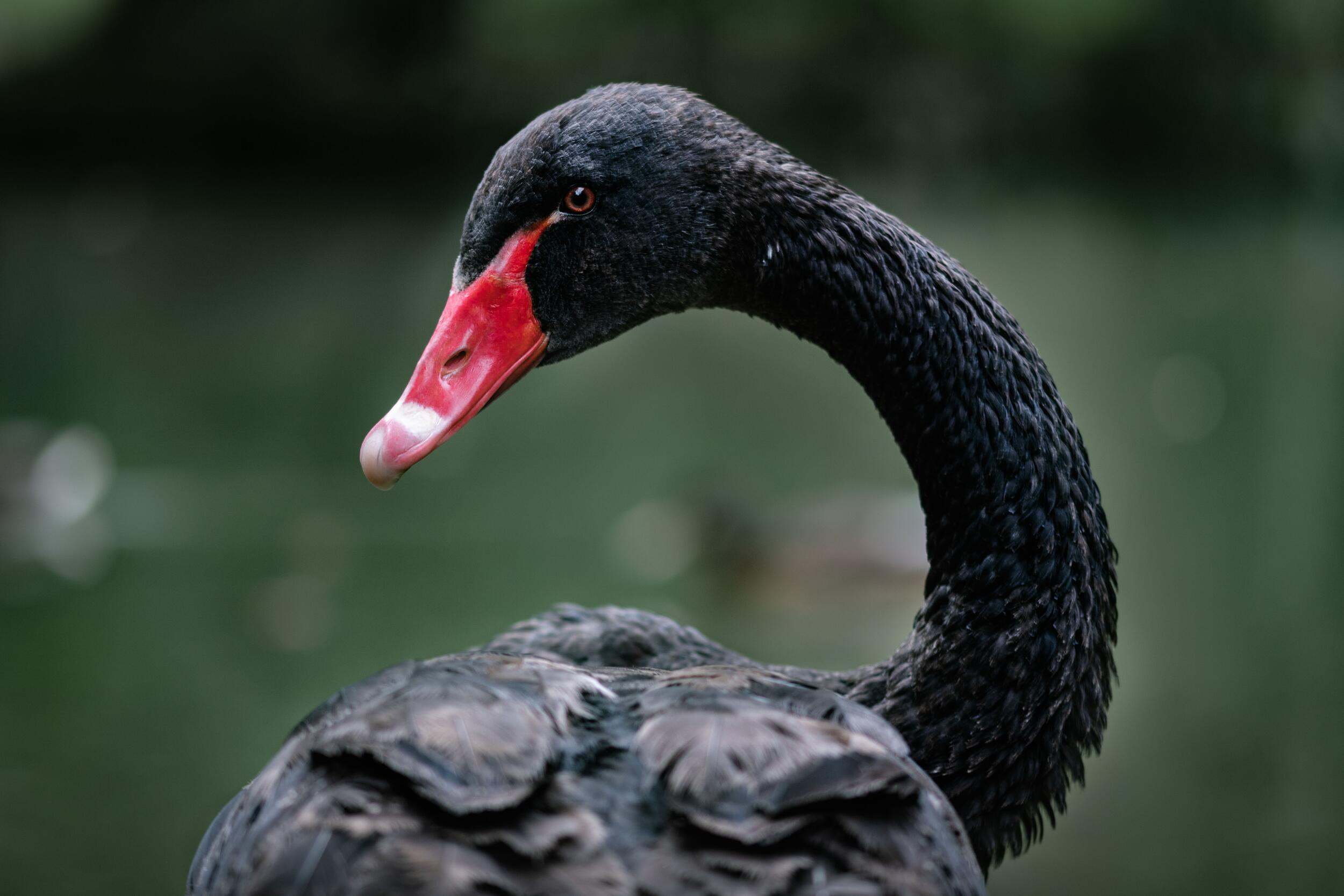
Black swan in Perth, Australia © Pawel Czerwinski/Unsplash In medieval Europe, all known swans were white, so a black swan was considered a metaphor for the impossible. Except, well, black swans existed. This has made the black swan a new metaphor, for the seemingly impossible but in reality is just something outside our own preconceived notions. This is the kind of idea bandied about by thought leaders and business self-help gurus. I’ll leave them to it.
I prefer the real bird to the metaphor. The black swan is the native swan of Australia, where it is well protected and found widely. And it’s a spectacular bird, with a bright red bill contrasting to the black plumage. Its cygnets are a light gray. And I find them quite cute, not at all like the “ugly duckling.”
Interestingly, the black swan was introduced to New Zealand by Europeans in the 1860s. Unlike the mute swan in the United States, it’s not considered invasive. There was a native New Zealand swan, but it was hunted to extinction, so perhaps the black swan is just filling that niche. Also, after the introductions, some Australian black swans arrived on their own.
Still the New Zealand black swans have proliferated and are spread across much of the country, necessitating periodic culls.
-
Black-necked Swan
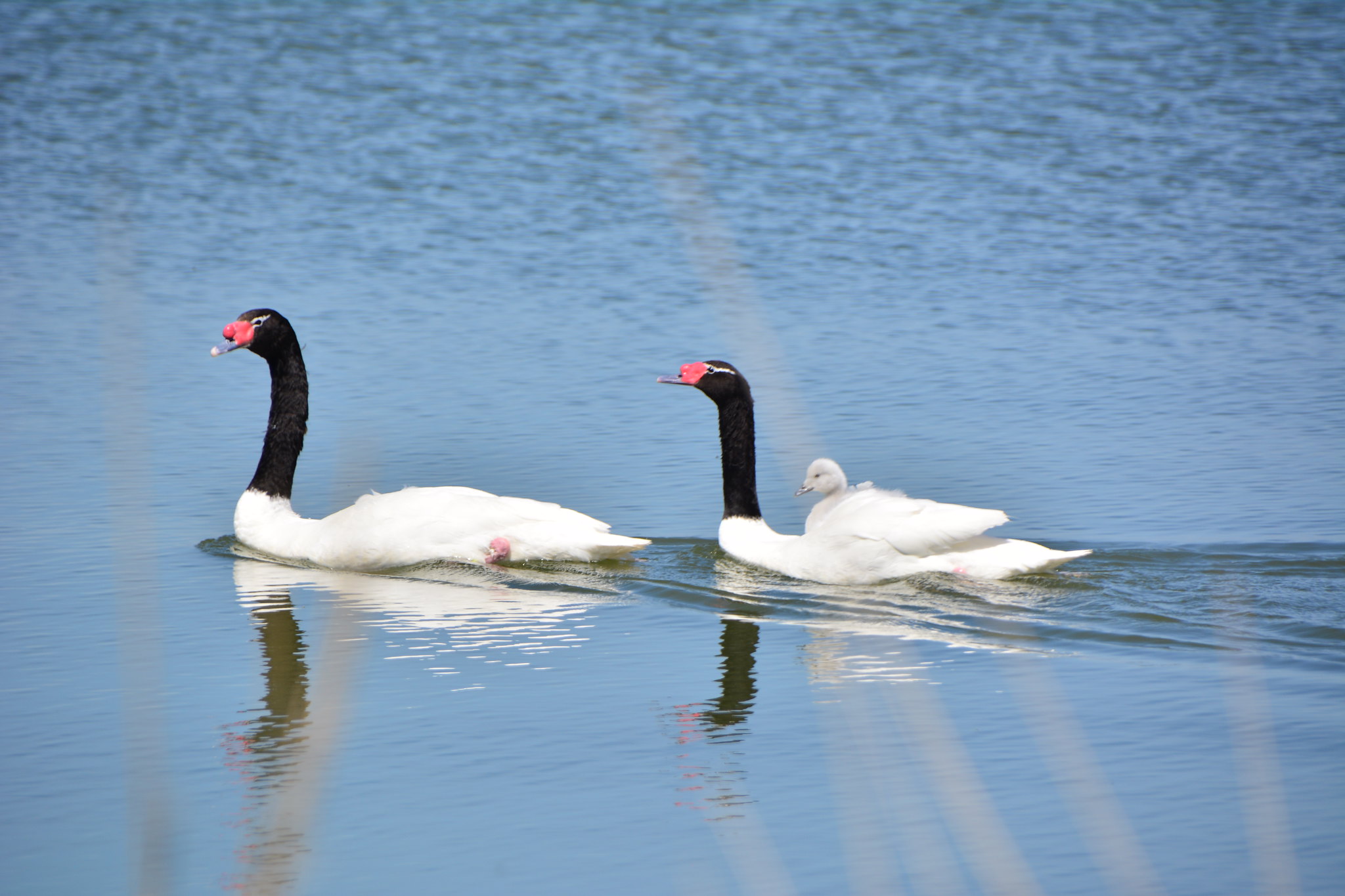
Black-necked swans © RDW. Photography via flckr under a creative commons license This is the only true swan species that breeds in the Neotropics; it is found over a wide range of South America from southeast Brazil to Patagonia. It’s another striking bird, with its namesake black neck and a prominent red knob on its bill.
According to biologist Gary Kramer, the black-necked swans favor “saltwater and brackish water lagoons, inlets and sheltered coast sites in the winter but will also use freshwater wetlands, rivers, and lakes.”
Like other swans, commercial hunting in the 1800s took a toll, but they have rebounded. Wetland loss poses some threat, but the black-necked swan also remains a common species.
-
Coscoroba Swan

Coscoroba Swan © Paul Woods via flickr under a creative commons license The other swan species are in the genus Cygnus, the true swans. The Coscoraoba swan is the only one in its genus, and is also smaller than the other swans. The true swans are stately birds. The Coscoroba swan? Well, no disrespect intended, but I think it somewhat resembles the insurance company AFLAC’s duck mascot.
This coscoroba swan has bright reddish-orange bill and feet, and appear more stream lined than Cygnus swans. Their range, according to Kramer, is central Chile, northern Argentina, Paraguay, Uruguay and southern Brazil south to Tierra del Fuego and the Falkland Islands. This is also a common zoo species.
And the name? Most swan names are quite descriptive and it’s no different for the coscoroba. The name is onomatopoeiac, meaning it is meant to spell out the sound of its call.
-
Whooper Swan
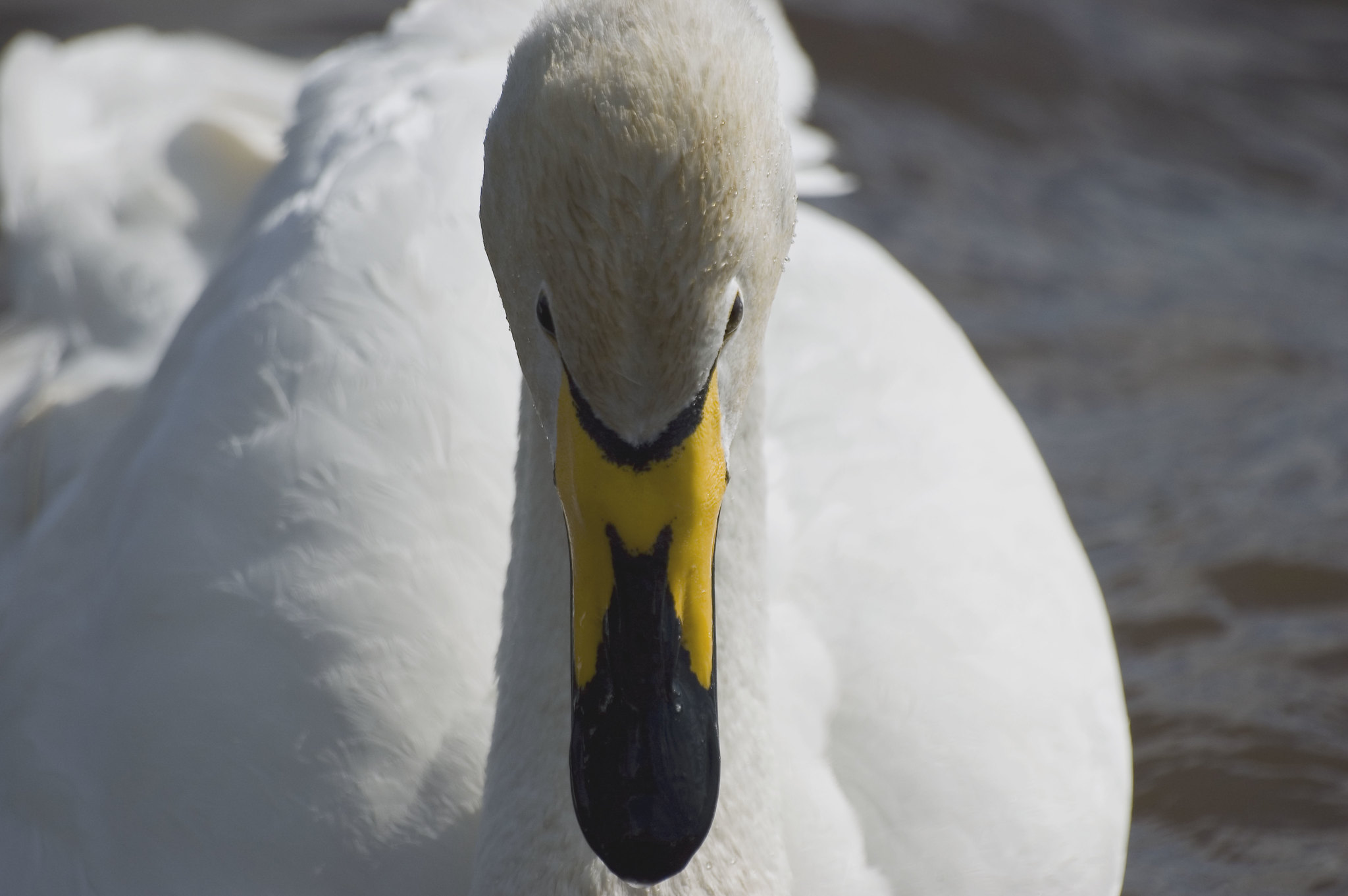
Whooper swan © Colin Houston via flickr under a Creative Commons License According to Gary Kramer in his mammoth book Waterfowl of the World (a great gift idea for birders on your list), whoopers “are very vocal and gained their common name from their loud, whooping bysyllabic and repeated call.”
The whooper is a large Eurasian species and yet another conservation success. The protection of wetlands has really paid off for whoopers, with populations in the United Kingdom predicted to double by 2030, in large part due to the creation of nature reserves.
Seeing a theme here? People love swans and have successfully conserved them. It’s true that people are more apt to pay conservation attention to charismatic species than to wildlife they consider “ugly.” But I prefer to take swan conservation as hopeful. When we really commit to conserving wildlife, we can make a difference.




Great article; thank you.
black swans were introduced into NZ in the 1860’s not the 1960’s, I’m guessing it’s a typo. In flight, the rhythmic flash of the white primaries is spectacular.